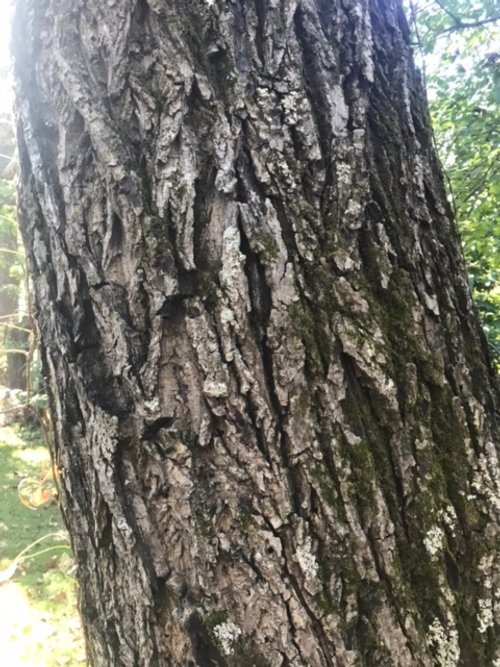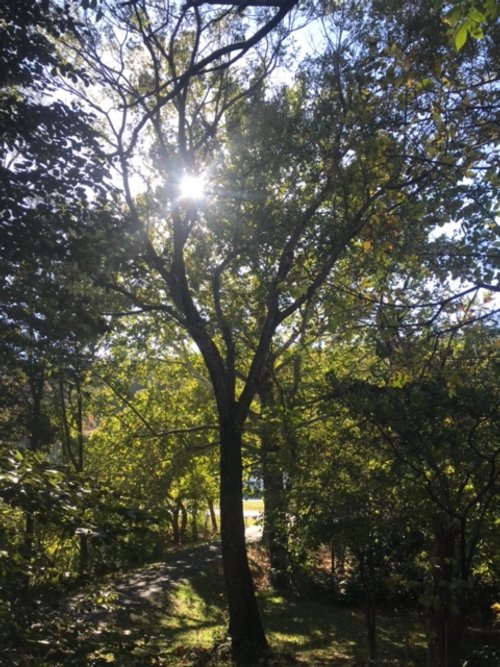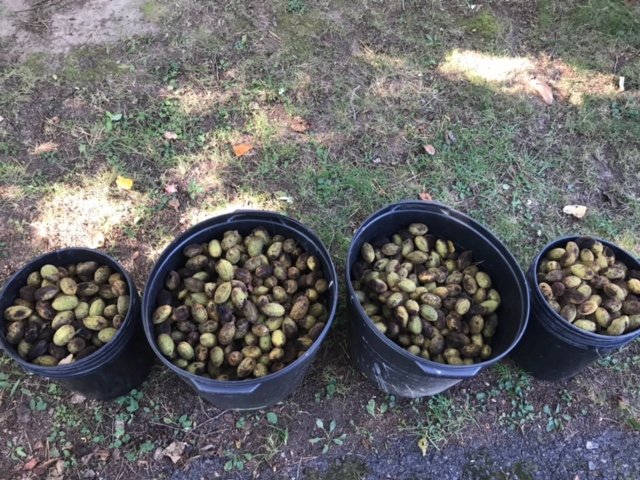Butternut





Butternut
Juglans cinera
Plant for the fresh buttery taste, for the sweet cold-tolerant oilnut, for selecting canker-resistant varieties for a Butternut future!
Hardy from Zones 3-7. Up to 40-70 feet tall, 30-50 wide. All nuts need a buddy.
We’ve only known Butternut a short while, but we’re becoming fast friends for a variety of reasons. Sadly, we haven’t had many opportunities to meet them. Since the 1970s, Butternuts have drastically declined because of a fungal canker. Some say the fungus arrived in the US on a nursery shipment of Japanese Walnuts, but strangely that fungal species hasn’t been found outside North America. Wherever it came from, it’s infected 90% of Butternut trees in their native range from Quebec to Minnesota and down to the northern borders of Alabama, Arkansas, and Tennessee. Early disease signs look like dieback of branch and stem, but cankers are most easily seen underneath the bark as caved-in black-stained sections of wood. Fungal spores spread downhill to leaf scars, bark cracks, and wounds with rainwater, splashing from tree to tree. Freestanding trees survive better by avoiding spray, but insects like beetles might also carry spores.
Tricky to find them alone, because Butternut likes to grow in clusters on well-drained riparian slopes, in cozy coves, and mixed forests of wet and dry soils, often in the company of Sugar Maple, Oaks, Sycamores, and Tulip Poplars. Even so, they’re not big fans of dense shade, an early succession species preferring the sunlit view from the overstory. In that way, they’re pretty similar to their cousin Black Walnut, both members of the Juglandaceae family. They also share a pretty similar pinnately compound leaf shape (pinnate from a Latin word meaning feathered or winged) and ridge-and-groove bark pattern, but Butternuts are distinguished by their lighter gray color. They’re named White Walnut for that lighter bark and for their lighter brown heartwood, turned into lightweight, soft, and rot-resistant lumber favored for church altars and duck decoys. Butternut’s white sapwood is also tappable, with similar sap flow, volume, and sugar content as Sugar Maple and Black Walnut. Like Black Walnut, Butternut sap has a tremendous amount of pectin. Drilling holes into Butternuts does create wounds for the fungus to spread cankers, so if you do have healthy Butternuts might be better to skip them come sugaring season and find some Black Walnuts.
Butternuts are the most cold-hardy Walnut, standing temperatures down to -30 degrees C and growing up in high altitudes of dry rocky limestone where Black Walnut can’t go. Like other Walnuts, the feathered leaves fly out when daylight hours lengthen rather than when temperatures warm. Like other Walnuts, both male and female flowers blossom on the same tree, but usually mature at different times.
The female flowers transform into the desired drupe, oval-shaped like lemons with similar color, often bunched in pairs or groups of six. Most trees start producing around 20 years, though as early as 5 with enough sun, and crop heavily every few years for decades. Cracked open, the meat has a fresh bright buttery flavor, sweet and oily with lots of protein giving it another common name of Oilnut. Indigenous preparations of Butternut are very similar to Black Walnut, but Haudenosaunee use includes crushing and boiling for baby food, as well as using nut oil to condition hair and bark infusions to induce pregnancy! Cherokee medicine also honors bark, ground into pills for toothaches. Bark and husk mixes stunned fish to make it easier to catch them, and both lend a yellow-orange dye to homespun cloth, earning Confederate soldiers and some settlers of southern Illinois and Indiana the nickname ‘Butternuts’ because of their clothing color.
We propagate our Butternuts from two fully native trees: a freestanding yard tree in the foothills of the Blue Ridge and one in a grove of Pawpaw and Spicebush along a fork of the Shenandoah River. Thankfully, no sign of canker on the riverside tree and just a little on the yard tree, which is at least 70 years old and cropping abundantly. Often, canker-free and solitary trees mean that we’re looking at a Buartnut, a cross between Butternut and Japanese Walnut, or Heartnut. Butternuts don’t hybridize with Black Walnuts, but Buartnuts have been backcrossed with Butternuts to create hybrid resistance to canker and have been planted far more widely than Butternuts themselves. However, based on detailed descriptions and keys for bud and twig, we’re confident we’re growing out Butternut. This species has had limited seed selection, so we hope we’re contributing something useful to the future potential of this wonderful tree!